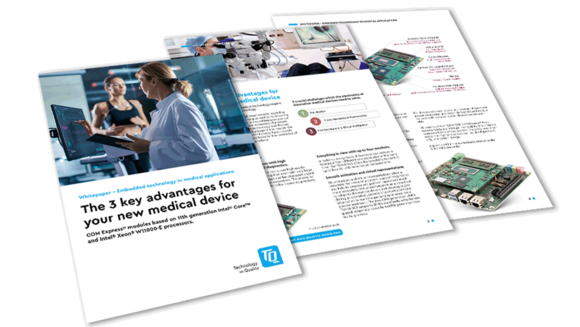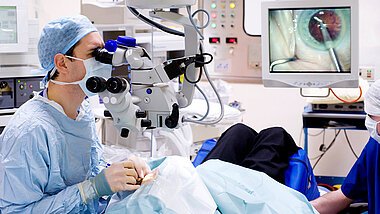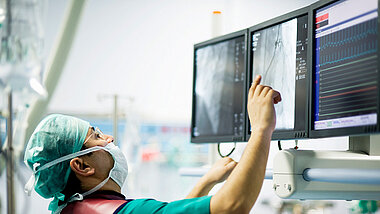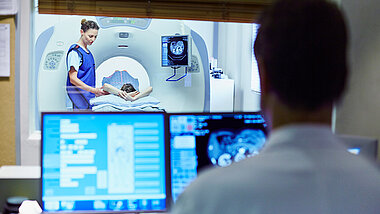Embedded systems for medical technology
How the Computer on module TQMx110EB with 11th generation Intel Core & Intel Xeon processors brings the decisive advantage for your medical technology application
This is how you secure the decisive lead for your new medical device Innovative solutions in medical technology require powerful Embedded systems

Medical devices place high demands on visualization, video streaming, as well as multitasking and artificial intelligence. In this whitepaper you will learn how to meet these increasing challenges with the right Computer on Modules and thus secure your competitive advantage on the market. We show you why the COM Express Basic Computer on Module offers the optimal prerequisites for the realization of market-leading medical products.
What you can learn from our whitepaper:
- What medical technology applications require in terms of visualization, video streaming and processing, as well as multitasking and artificial intelligence
- What to look for when selecting Embedded systems for your medtech device
- How embedded technology can solve the increasing electronics challenges of forward-looking medtech devices

A small topic excerpt:

Visualization: High-resolution screens with high color depth for visual diagnostics
The Computer on Module TQMx110EB supports two super-high resolution 8K monitors, so that crisp images with high color resolution can be displayed even with very large image diagonals. Thus, even the smallest details can be inspected accurately.

Video streaming: Capture high-resolution image and video data
Medical applications very often rely on external video data, such as live microscopic images, information from X-ray units and other external sources. With the help of the TQMx110EB's numerous high-speed interfaces such as PCIe Generation 4 and USB 3.2 Gen 2, even multiple HDMI frame grabbers can read in and process super high-resolution video streams in parallel from a wide variety of sources with extremely low latency.

Artificial intelligence
Artificial intelligence is one of the most important drivers of innovation in medical technology, especially in the field of image analysis. Typical areas of application include the evaluation of CT scans, MRI images, and skin and eye images for supportive, automated diagnostics.